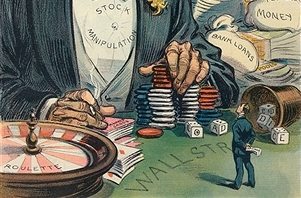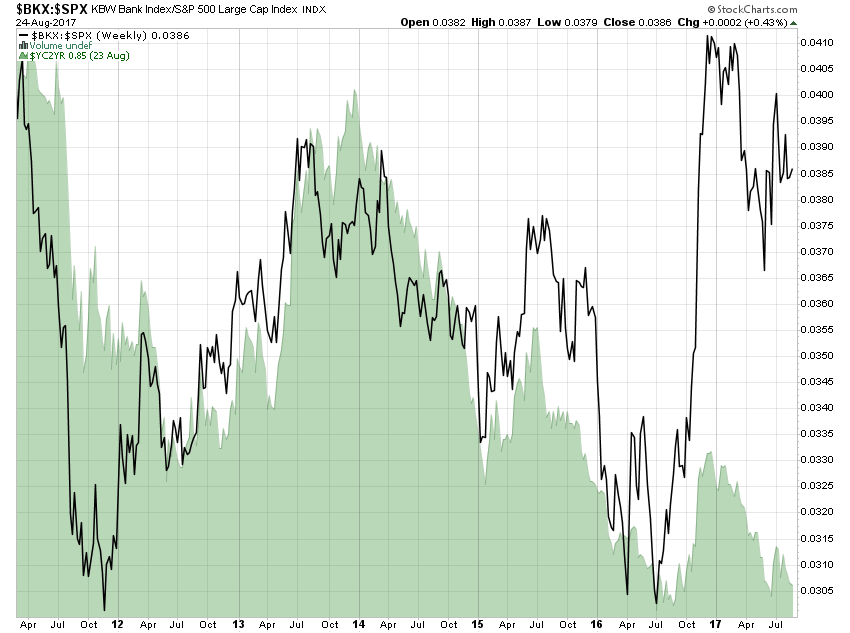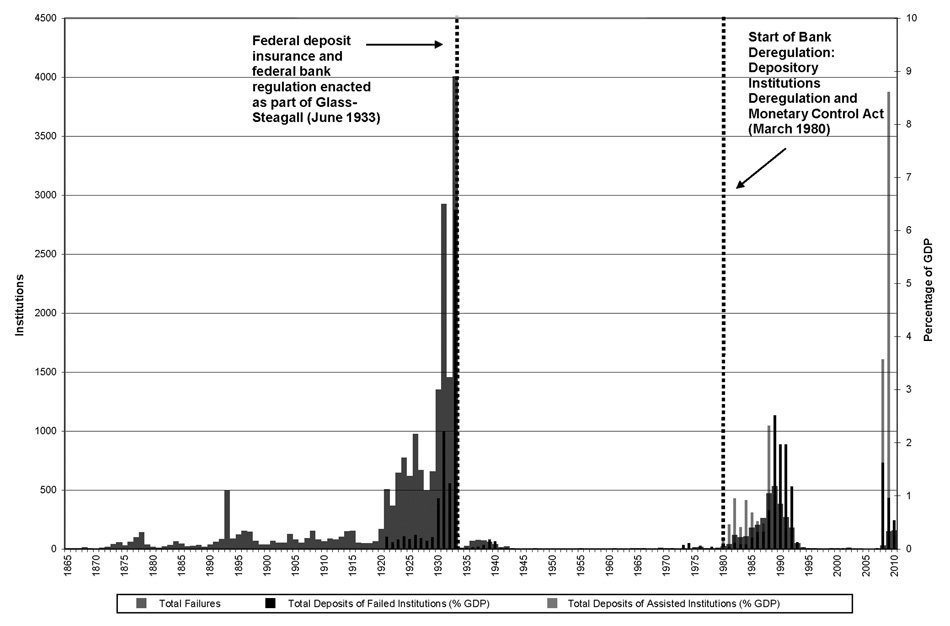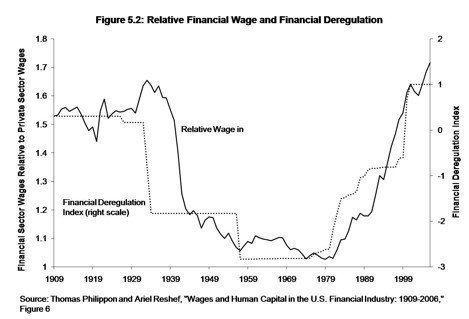One of the hottest ‘Trump triumph trades’ late last year was the financial sector. Banks stocks soared in the immediate aftermath of the election leaving some to question why they were so strong.
Typically, the banks relative performance to the S&P 500 is highly correlated to the yield curve and this makes sense. When the yield curve is steep, banks can earn greater net interest margins (by borrowing short and lending long) and vice versa.
However, the yield curve has flattened dramatically so far this year and bank stocks have failed to give back their post-election rally. This leaves me to conclude they are pricing in something other than rising net interest margins.
It seems investors are hopeful that the Trump administration will remove much if not all of the financial regulations put in place after the financial crisis. In fact, this is one issue House Republicans have actually been able to get behind (even if their colleagues in the senate haven’t… yet).
In response, Stanley Fischer, Vice Chairman of the Fed’s board of governors, recently came out with a strong warning against this trend calling it, “very, very dangerous and extremely short-sighted.”
I know it’s been a decade now since the financial crisis began but for those who don’t remember it there are just two chart you need to see to understand both the dangers of banking deregulation and its stubborn persistence.
First, it’s very clear that when appropriate regulations are in place, financial stability is both vibrant and enduring. When they are removed financial stability rapidly erodes and we get a crisis or even a series of crises.
So it would seem very obvious that financial regulation is a good thing, even a necessary thing, for the health of the economy. Still, what’s best for Main Street is not what is most profitable for Wall Street. In fact, there is a very tight correlation between deregulation and Wall Street profits and this is precisely why financial deregulation rises from the dead time and time again.
Ultimately, Wall Street bears the cost of economic stability and Main Street bears the cost of financial crisis. Wall Street thus counts on Main Street’s short-sightedness in order to fatten their wallets at everyone else’s expense. And this is exactly what the bank stocks are pricing in today.
I, for one, sincerely hope Mr. Market is wrong.



